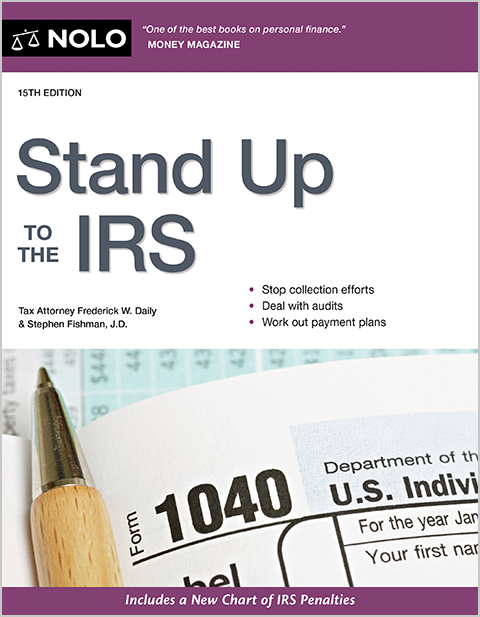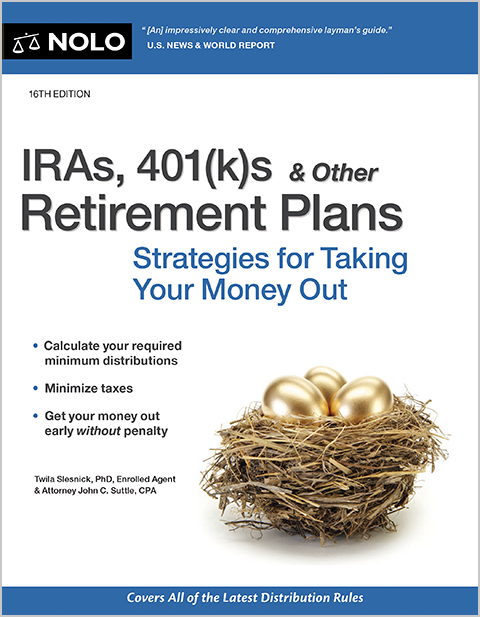The de minimis safe harbor lets you deduct relatively inexpensive property in one year without worrying about complex depreciation rules.
When your business buys a long-term asset, the cost might have to be deducted over several years. However, many business owners are able to deduct all (or mostly all) of their purchases in a single year by taking advantage of tax rules.
For example, if you buy a relatively inexpensive item, you can deduct the expense in one year using the de minimis safe harbor rather than capitalizing it. (When you "capitalize" an asset, you spread writing off the item over several years.) Basically, the de minimis safe harbor allows businesses to deduct in one year the cost of certain long-term property items.
IRS regulations set a maximum dollar amount—$2,500, in most cases—that may be expensed as "de minimis," which is Latin for "minor" or "inconsequential." (IRS Reg. §1.263(a)-1(f) (2025).) While $2,500 might not seem like a lot of money, this deduction can really add up because there's no limit on how many items costing up to $2,500 each you can deduct every year.
What Is De Minimis Safe Harbor Property?
The de minimis safe harbor is most often used to deduct the cost of tangible personal property items (units of property) you use in your business.
This category doesn't include components acquired as part of a unit of property, such as the original engine in an automobile. Any item with an economic useful life of 12 months or less must be deducted under the de minimis safe harbor if the cost is within the de minimis limit.
You can use the de minimis safe harbor to deduct the cost of property you don't use 100% of the time for business. Your deduction is limited to the dollar amount of your business use percentage.
What Can't Be Deducted Under the De Minimis Safe Harbor?
This safe harbor can't be used to deduct the cost of land, inventory (items held for sale to customers), certain spare parts for machinery or other equipment, or amounts that you pay for property that you produce or acquire for resale.
What Is the De Minimis Safe Harbor Expense Limit?
The maximum amount you can deduct under the de minimis safe harbor depends on whether your business has an "applicable financial statement" for the year, such as:
- a certified financial statement a CPA prepares (certified financial statements by CPAs usually cost at least several thousand dollars, and few small businesses have them) or
- a financial statement, other than a tax return, your business files with the SEC or other state or federal agency (not including the IRS), such as a Form 10-K or an Annual Statement to Shareholders. Only larger corporations or businesses that are publicly traded usually file such statements.
$2,500 or $5,000 De Minimis Safe Harbor Limit
If you don't have such a financial statement, you may use the de minimis safe harbor only for property that doesn't cost more than $2,500 per invoice, or $2,500 per item as substantiated by the invoice. (This amount was $500 in the original version of the regulation, but the IRS increased it to $2,500.) If the cost exceeds $2,500 per invoice (or item), no part of the cost may be deducted by using the de minimis safe harbor.
If you have an applicable financial statement, then you may increase the per item or per invoice amount up to $5,000.
How to Determine the Cost of an Item
In determining whether the cost of an item exceeds the $2,500 or $5,000 threshold, you must include all additional costs that are on the same invoice with the tangible property—for example, delivery and/or installation fees.
Also, you can't break into separate components property that you would normally buy as a single unit.
Qualifying for the De Minimis Safe Harbor
To qualify for this de minimis expensing safe harbor, a taxpayer must:
- establish before the first day of the tax year (January 1 for calendar year taxpayers) an accounting procedure requiring it to expense amounts paid for property either costing less than a certain dollar amount and/or with an economic useful life of 12 months or less, and
- actually treat such amounts as currently deductible expenses on its books and records.
If you have an "applicable financial statement" and wish to qualify to use the $5,000 de minimis limit, your accounting procedure must be in writing and signed before January 1 of the tax year. If you don't have such a statement and qualify only for the $2,500 limit, you don't need to put your procedure in writing (although you still may do so). But it should still be in place before January 1 of the tax year.
Claiming the De Minimis Safe Harbor
To take advantage of the de minimis safe harbor, you must file an election with your tax return each year. When you make this election, it applies to all expenses you incur that qualify for the de minimis safe harbor. You can't pick and choose which items you want to include. You must also include items that would otherwise be deductible as materials and supplies.
De Minimis Safe Harbor Checklist
To help determine whether an expense qualifies for the de minimis safe harbor, use the following checklist.
Cost Threshold
Is the item $2,500 or less per invoice/item?
Is it $5,000 or less and does your business have an applicable financial statement?
Type of Property
Tangible personal property or equipment used in the business?
Not land, real property, or inventory held for resale?
Not a major component of a larger unit of property?
Accounting Procedures
Do you have a policy in place before the tax year begins requiring capitalization only of items above the threshold?
If using $5,000 with an applicable financial statement, you ust have a written and signed policy.
If using $2,500 without an applicable financial statement, a written policy isn't required but is recommended.
Business Use of the Property
Do you use the property for business operations?
If partial use, is the expense adjusted for the business-use percentage?
Book Treatment
Did you expense the item on your financial records/books in accordance with your capitalization policy?
Annual Election
Did you attach the de minimis safe harbor election statement to your timely filed tax return for the year? (The election must apply to all qualifying purchases for the tax year.)
Read More Articles
Find out about IRS audit rates and the odds of being audited in What Are the Triggers of IRS Tax Audits?
Learn how much time most people spend doing business taxes.
Read about common tax deductions for individuals.
Get More Information
For more information on this and other tax issues for small businesses, get Deduct It! Lower Your Small Business Taxes, by Stephen Fishman (Nolo).
If you need more help, talk to a tax professional, such as a certified public accountant or a tax attorney. A tax professional can prepare tax returns or provide tax information, guidance, or representation before the IRS.
Talk to a Tax Attorney
Need a lawyer? Start here.
How it Works
- Briefly tell us about your case
- Provide your contact information
- Choose attorneys to contact you
- Briefly tell us about your case
- Provide your contact information
- Choose attorneys to contact you

